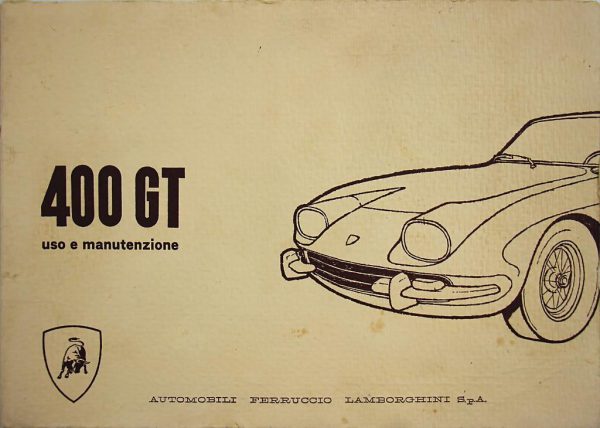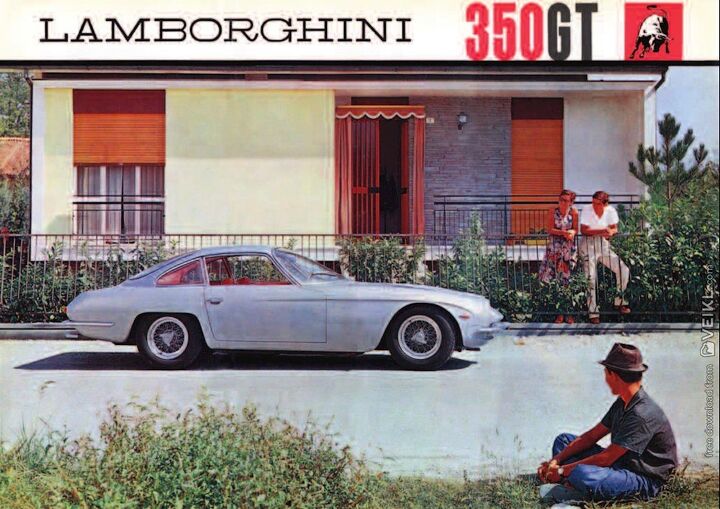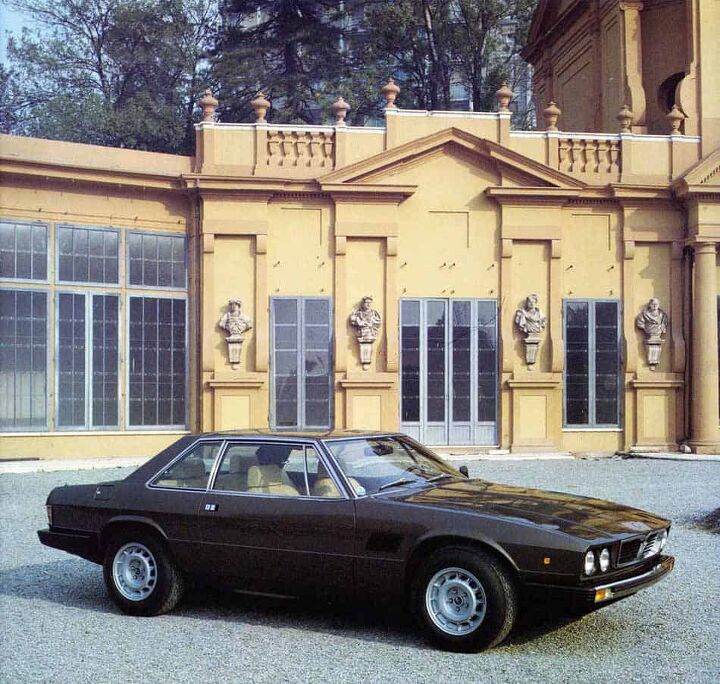#SportsCoupes
Rare Rides Icons: Lamborghini's Front-Engine Grand Touring Coupes (Part V)
Lamborghini proved it could make a luxurious grand touring coupe that a few people were willing to buy instead of a Ferrari with its first-ever production car, the 350GT. Based on the 350GTV prototype that was not actually drivable, the 350GT eventually grew and matured into the very similar 400GT we featured last time.
At its inception, the 400GT was just a 350GT with a larger engine, since the intended roof edits to turn the 2+1 into a 2+2 were not production ready. Lamborghini advertised the 350, 400, and 400 2+2 as three separate models, a fun take on the truth. But after three variations of the original 350 design, it was time for something new. The replacement process was not without drama.
Rare Rides Icons: Lamborghini's Front-Engine Grand Touring Coupes (Part IV)
The 350GT was Lamborghini’s first production car, and as we learned in our last entry, was a very rapid adaptation of the 350GTV prototype. And while the GTV was certainly more elegant looking than the GT, the former’s foibles included a hood line that was too low to fit the company’s V12, as well as a general lack of practicality.
Practicality was the word of the day in the 350GT’s development. The 2+1 grand touring coupe brought Ferruccio Lamborghini’s vision to life, as a competitor to the well-established finery from Ferrari. There were just 120 examples of the 350GT produced before its successor joined the ranks. The new car had a larger engine that made more power but looked very similar to its brother. Meet the 400GT.
Rare Rides Icons: Lamborghini's Front-Engine Grand Touring Coupes (Part III)
After Lamborghini’s 350GTV show car debuted in Turin, Ferruccio Lamborghini was very intent on turning the coupe’s good publicity into sales of a real production Lamborghini. But the prototype lacked running gear, an engine that fit under its hood, and there were many other miscellaneous issues. As we learned last time, redesign work began on the GTV’s chassis, engine, and body at a furious pace. That’s where we pick up today.
Rare Rides Icons: Lamborghini's Front-Engine Grand Touring Coupes (Part II)
We return to our coverage of Lamborghini’s front-engine grand touring coupes today, and the story of the company’s first prototype. A teardrop-shaped two-door with sweeping lines and an angular rear, the 350GTV was the first passenger vehicle Ferruccio Lamborghini ever made. His past experience was as a successful businessman and builder of stylish Italian tractors at Lamborghini Trattori.
The high-strung 3.5-liter V12 was completed (albeit in race car specification) and the coupe’s body had been casually assembled by the craftsman of Carrozzeria Sargiotto, who usually made plastic moldings and not cars. Was the next stop the 1963 Turin Auto Show? Nope.
Rare Rides Icons: Lamborghini's Front-Engine Grand Touring Coupes (Part I)
I was reminded the other day (by Facebook) about a particularly beautiful coupe I’d photographed at a local car show in 2014. It had two doors, a big engine in the front, svelte and restrained styling, and a Lamborghini badge on the nose. It’s easy to forget that Lamborghini made elegant grand touring coupes long before it got to the likes of the outrageous Countach or LM002. We start at the beginning, with the company’s very first prototype, the 350GTV.
Rare Rides: The 1989 Mazda MX-6, an Enthusiast's Four-wheel Steering Choice
Today’s Rare Ride represents the rarest subset of a vehicle that was for most, an afterthought. A sporty coupe ignored in its day, the MX-6 was by most accounts a handsome car that was fun to drive. Particularly elusive is the MX-6 behind today’s article. It has a manual transmission, is turbocharged, and has four-wheel steering. Could it be any cooler (Chandler voice)? Let’s find out.
Buy/Drive/Burn: Mid-seventies Captive Imports
Today’s Seventies captive imports trio comes to us via suggestion by commenter MRF 95 T-Bird. He wants to see which of the Manta, Capri, and Arrow warrants a malaise era Buy. We’ll straddle two model years today, 1975 and 1976.
Rare Rides: The Intensely Stylish 1988 Lincoln Mark VII Bill Blass Edition
It seems like we talk about personal luxury often here at Rare Rides, not that the topic could ever be discussed too much. Even though we discussed personal luxury just days ago via the Chrysler LeBaron, we’re back with more PLC today.
Let’s check out the 1988 Lincoln Continental Mark VII, in fashionable Bill Blass trim.
Rare Rides: The Intensely Sporty 1992 Dodge Daytona IROC R/T
Rare Rides has featured a few sports coupes of the Dodge variety previously, but those Eighties cars were not as modern, refined, and sophisticated as today’s seldom seen two-door.
Presenting the Dodge Daytona IROC R/T, from 1992.
Rare Rides: The 1976 Maserati Kyalami, Obscure Italian Luxury
Today’s Rare Ride is a very luxurious Maserati which flew in under the radar and was offered by the Italian firm for a short while. A four-seat coupe, it was named after a race track in Africa.
Let’s find out more about Kyalami.
Rare Rides: A 1994 Fiat Coupe, as Legal Immigrant
This isn’t the first time we’ve seen an imported two-door Fiat on these pages which required some paperwork to get into the country. But it is the first time it’s all been done above board.
Let’s check out this 25-year-old Italian.
Rare Rides: Aggressive Luxury With the 1977 Pontiac Can Am
Rare Rides reviews another Pontiac today. And much like the recently featured Bonneville, it’s large and in charge, from the Seventies, and has two doors. Let’s see how much horsepower the 1977 Can Am gained through stickers and spoilers.
Rare Rides: The 1986 Ford Escort EXP, for Driving Enjoyment
Rare Rides featured an EXP once before, in the form of a tidy first-generation example painted in blazing orange. Today’s EXP is a much more modern looking second generation, in two-tone grey and black.
Will the Subaru BRZ Survive If Toyota Nixes the 86?
News of the Toyota Supra’s four-cylinder engine, currently relegated to the Japanese market, bolstered media assumptions that the base model could eventually replace the 86 coupe in North America. While that’s a bit of a stretch, especially considering The Japan Times says a second-generation 86 is rumored to in the works for 2021, sales of the model sank nearly 40 percent in the United States last year. Toyota has also suggested it is considering paring its North American lineup.
Like the Supra, Toyota’s 86 is shared with a manufacturer that sells it under a different name, with its own unique flair. It may not sell as well, but the Subaru BRZ is essentially the same vehicle and its manufacturer doesn’t want you to worry about Toyota. It would like to continue building the lightweight sports coupe even if the 86 goes extinct. However, wanting to and doing so are two completely different things.





























Recent Comments